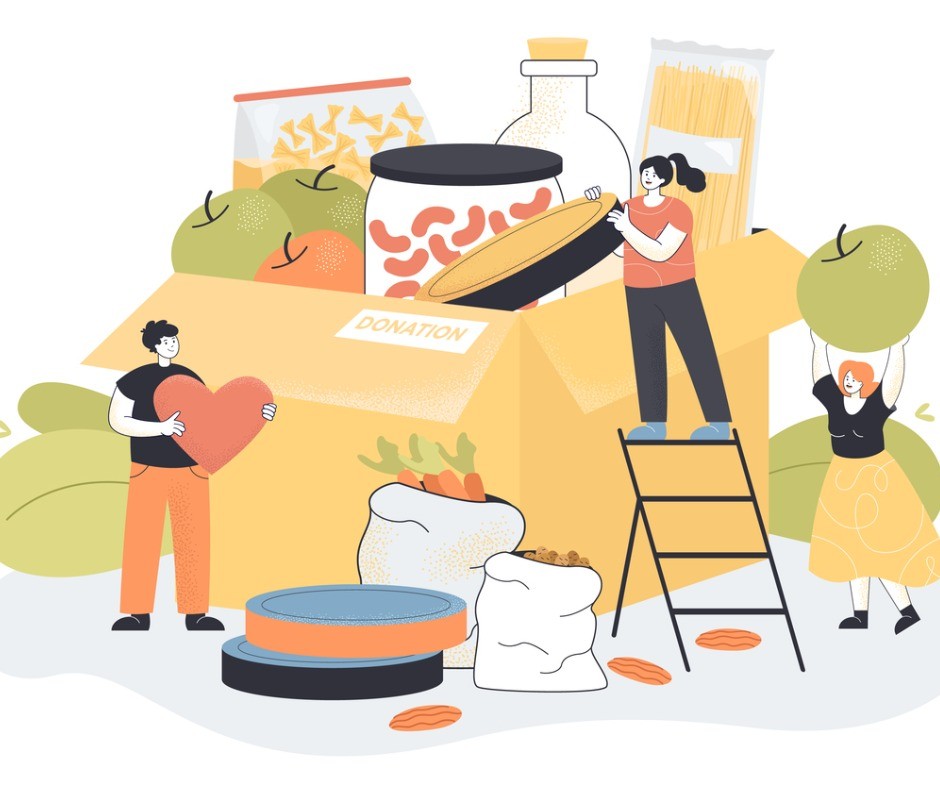What is Food Insecurity & How Do We Overcome It?
September 15, 2022

By: Taylor Paul, Registered Dietitian Nutritionist | UP Health System - Portage
Food insecurity is having a lack of regular access to healthy and nutritious food that is necessary for normal growth and development. In 2020, an estimated one in eight Americans were food insecure, equating to over 38 million Americans, including almost 12 million children. Due to the widespread economic crisis caused by the COVID-19 pandemic, food insecurity has increased drastically in America over recent years, leaving unemployed, furloughed and reduced-time workers struggling to put food on the table.

Registered Dietitian Nutritionist
Although many people may not be hungry to the point that they are suffering from the physical discomfort of starvation, they may still be considered food insecure. In many cases of food insecurity, people have just enough food to meet their energy requirements but are uncertain that it will last, or they may be forced to ration what they have to get by. Even in moderate levels like this, food insecurity can contribute to many forms of malnutrition and can have a serious impact on one’s overall health and well-being.
Extensive research has shown that food insecurity is a complex problem and impacts every community in the U.S. For example, low-income families who are food insecure are also commonly affected by many other overlapping issues, like a lack of affordable housing, social isolation and other economic or social disadvantages. Altogether, these issues are important social determinants of wellness that can increase risk for negative health outcomes and disparities.
Fortunately, there are steps we can take to help increase access to nutritious foods and decrease the prevalence of food insecurity. Check out some of the strategies below for overcoming food insecurity:
- Donate and volunteer at a food bank like Feeding America, a hunger-relief organization made up of 200 food banks and 60,000 food pantries across the U.S.
- Stock a community fridge (outdoor refrigerators where anyone can take or donate food). Look up the Western Upper Peninsula Food Bank located in Houghton County for more information on stocking a fridge.
- Organize a food drive and donate your extra produce, pasta or cans of food you won’t use, instead of letting it go to waste. A single box of donations can provide up to 25 meals, so it's more than worth it.
- Contact your state and federal representatives and push for policies that will increase access to food, like expanding SNAP benefits and funding food initiatives.
- Locate an unused, easily accessible plot of land and turn it into a community garden where community members can plant crops and grow healthy produce for food-insecure families to share.
If you or someone you know is experiencing food insecurity, help is available via several federal food assistance programs designed to provide access to healthy food, including the National School Lunch Program (NSLP), the Women, Infants and Children (WIC) program, and the Supplemental Nutrition Assistance Program (SNAP). And remember to contact a care provider to schedule a wellness exam or an appointment to address any issues you may be having because of food insecurity.
UP Health System - Portage has many medical nutrition services, including chronic disease management, diabetes, and pre-diabetes education, eating disorders, weight management, sports nutrition, food allergies, and pediatric nutrition management. We are staffed by a highly trained team of providers, nurses and support staff. To learn more about the services provided, visit UPHealthSystem.com/Nutrition-Wellness
